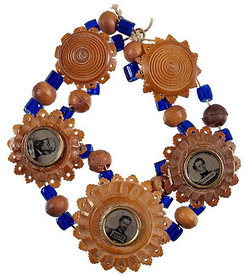 One of the things I love about this job is that I never know what it will involve next. Sure, much of the time I tend to putter along in my own little world, dealing with historical ephemera and documents, 19th-century photography, and American stoneware, but smack in the middle of a group of photographs, I find myself unexpectedly staring a botany lesson in the eye. Even the simplest of questions can drift off into uncharted waters. You never know where what seems like a small voyage will take you. (Of course, I had my share of questions that were akin to the Minnow‘s “three-hour tour,” too, but those are other stories….)
One of the things I love about this job is that I never know what it will involve next. Sure, much of the time I tend to putter along in my own little world, dealing with historical ephemera and documents, 19th-century photography, and American stoneware, but smack in the middle of a group of photographs, I find myself unexpectedly staring a botany lesson in the eye. Even the simplest of questions can drift off into uncharted waters. You never know where what seems like a small voyage will take you. (Of course, I had my share of questions that were akin to the Minnow‘s “three-hour tour,” too, but those are other stories….)
This happened last month when I was working on a sale of photographic material. In the midst of fairly normal albumens and daguerreotypes was the odd little bracelet pictured above – a bracelet with three tintype images of Civil War generals (all Union – Meade, Rosecrans, and Sherman) strung with blue glass beads and set “in tagua nut.” Because I can never just leave well enough alone, I went off to find out just what tagua nuts are. Turns out, tagua nuts are the endosperm of a genus of South American palm trees, and for small little things that grow thousands of miles away, they actually appear fairly often in American material culture, for the simple fact that they resemble elephant ivory, both in appearance and in their ability to be carved into durable useful objects. Elephant ivory has been long been fashionably ambiguous, either because it’s difficult or expensive to procure or just ethically distasteful. Tagua nuts solved that problem and show up in a number of places that one would also find ivory, including cane handles and clothing buttons. “Nutty,” but true!



